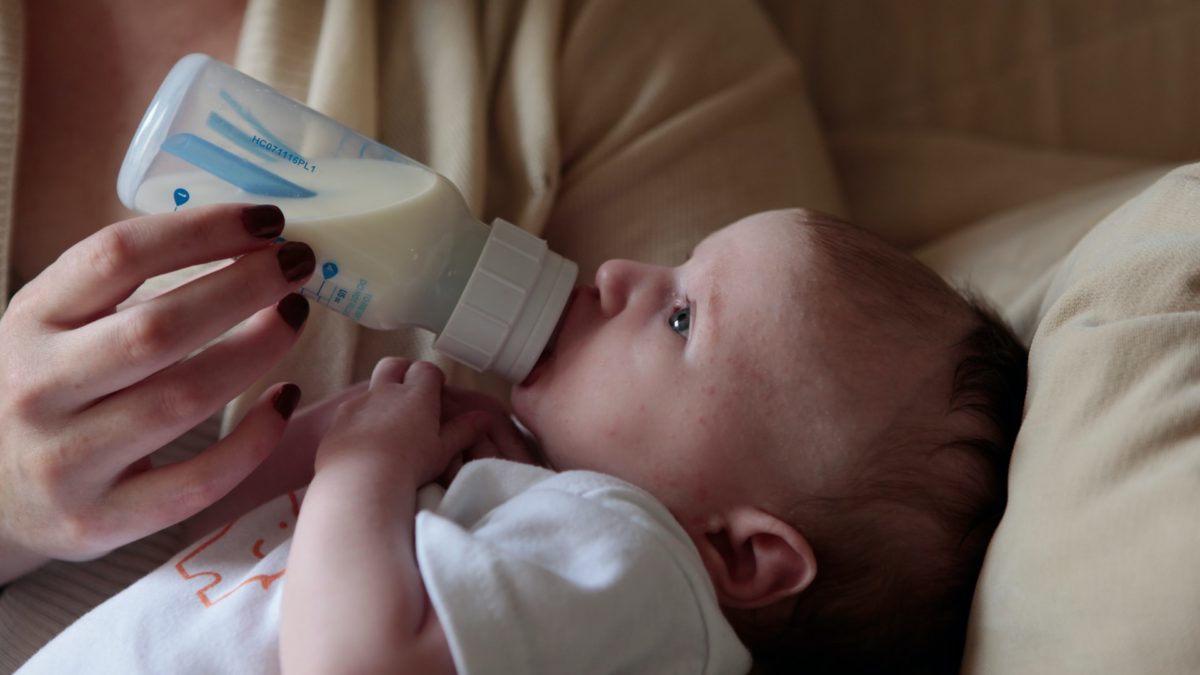Because mums don’t need yet another thing to feel guilty about, we would like to first point out that scientists don’t yet know what kind of effects microplastics have on children—or adults, for that matter.
Also, as pointed out by Oliver Jones, professor of analytical chemistry at the Royal Melbourne Institute of Technology, in an interview with The New Daily, “The numbers listed in the [study] should be treated as indications, not absolutes.” This means not every child would be ingesting the same amount of microplastics as the results from lab tests may differ from real life.
How are babies ingesting microplastics?
Researchers in Ireland have discovered that high levels of microplastics are released from infant-feeding bottles during formula preparation. The research also indicates a strong relationship between heat and microplastic release, such that warmer liquids (formula or water used to sterilise bottles) result in far greater release of microplastics.
That’s because most plastic infant-feeding bottles are made from polypropylene. While these plastic bottles are free from the harmful compound, bisphenol A (BPA), they can still release millions of microplastics (and trillions of smaller nanoplastics)—and more are released when exposed to high water temperature during the sterilisation process.
The researchers also found that other polypropylene plastic-ware products, such as kettles and lunchboxes, also release similar levels of microplastics.
“Following current guidelines for infant-feeding bottle sterilisation and feeding formula preparation, the average daily exposure level for infants is in excess of one million microplastics,” the researchers say. “Oceania, North America and Europe have the highest levels of potential exposure, at 2.1 million, 2.28 million and 2.61 million particles a day, respectively.”
Recommended bottle sterilisation and formula preparation procedures
Following their findings, the researchers, led by Dr Jing Jing Wang, have developed a set of recommendations for infant formula preparation when using plastic infant-feeding bottles that minimise microplastic release.
How to sterilise baby bottles
- Sterilise the bottle following WHO-recommended guidelines and allow to cool
- Prepare sterilised water by boiling in a non-plastic kettle/cooker (such as glass or stainless steel)
- Rinse the sterilised bottle using room temperature sterilised water at least three times
How to prepare baby formula
- Prepare hot water using a non-plastic kettle/cooker
- Prepare infant formula in a non-plastic container using at least 70oC water. Cool to room temperature and transfer prepared formula into a high-quality plastic infant feeding bottle
Standard precautions
- Do not reheat prepared formula in plastic containers and avoid microwave ovens
- Do not vigorously shake the formula in the bottle at any time
- Do not use sonication to clean plastic infant-feeding bottles
What are microplastics?
Microplastics are small plastic pieces, usually smaller than five millimetres long, and are harmful to the environment, especially our ocean and aquatic life. They can be purpose-made (like glitter and microbeads), and they’re also created by the breaking down of plastic bottles, the wearing down of tyres, the soles of our shoes and even the washing of clothes.
“This study is another piece of the puzzle that illustrates that the microplastics problem is likely much bigger than we think,” Dr Oliver told The New Daily. “This issue is something we need to start really getting to grips with sooner rather than later.”
How helpful was this article?
Click on a star to rate it!
0 / 5. 0
Be the first to rate this post!
Melody Tan
Related posts
Subscribe
Receive personalised articles from experts and wellness inspiration weekly!


